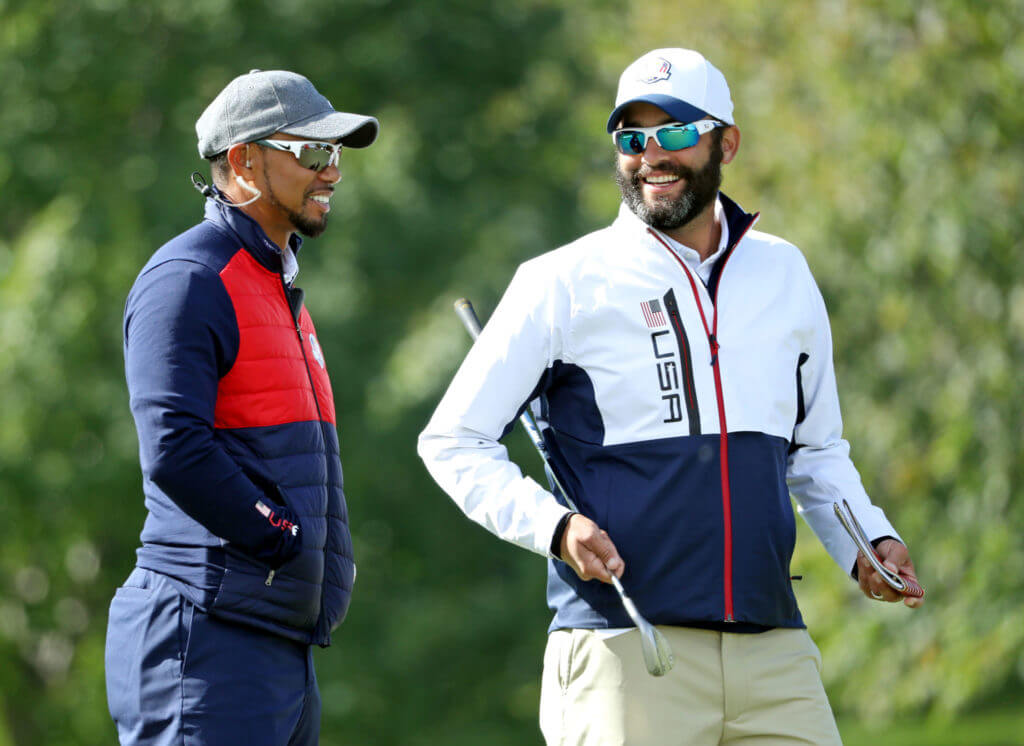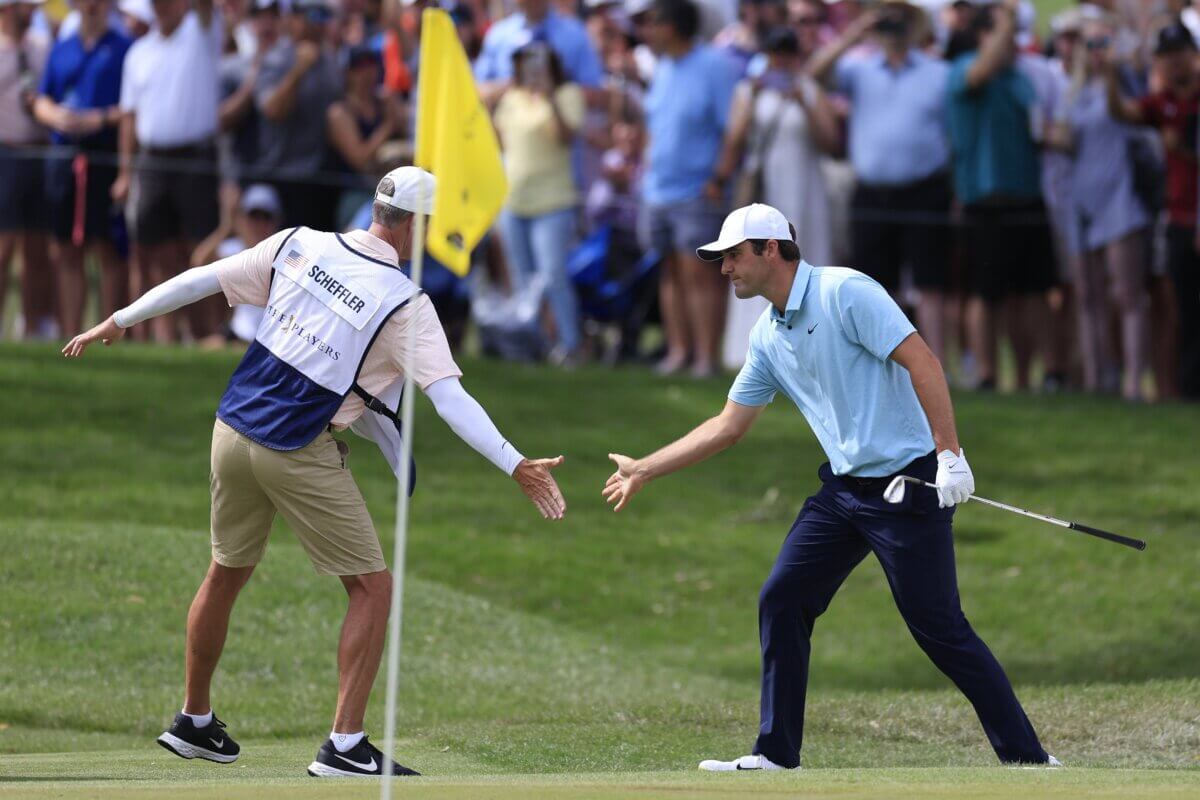Hawk’s Eye: Life, financially speaking, has gotten better and better for caddies thanks to Tiger

Editor’s note: This story originally ran in September 2018.
Maybe the living room isn’t the best place, but every PGA Tour caddie should have a picture of Tiger Woods framed somewhere in his house. Prize money on the tour grew from about $100 million during Tiger’s rookie season (1996) to almost $300 million by 2008, an increase so mind-boggling that it solely justifies the notion that Woods is one of the most influential sportsmen in American history.
Financially related leaps of that kind are almost always related to several factors, but not in this case. And not that I’m full of clever lines, but on the “Grey Goose 19th Hole” in 2011, I stumbled upon something people seemed to grasp when I said, “Tiger Woods doesn’t move the needle. He is the needle.”
By almost singlehandedly tripling purse revenue during that stretch, due largely to his doubling television ratings in tournaments in which he played, Woods made everyone more money. His fellow competitors, caddies, perhaps even media types to a certain extent. Tiger certainly is the biggest reason for the FedEx Cup’s lucrative debut in 2007, which continues to pay out $10 million to the player who wins the overall title — and will offer a much larger bonus pool beginning next season.
MORE HAWKINS: The caddies deserve better and this is why | The many hats of Tour caddies
Come to think of it, that pool will become an ocean. The cumulative bonus dough grows from $35 million to $60 million in 2019, and if you think a Memphis-based courier would have agreed to such a massive hike if Woods hadn’t launched his successful comeback nine months ago, you’re living in the wrong fantasyland.
The caddie who is on the bag for next year’s FedEx Cup champion stands to make $1.5 million just off the bonus dispersal, which is more than any player who finished atop the money list until 1995, the year before Tiger turned pro. When you consider that Steve Williams averaged somewhere in the neighborhood of $1 million per year during his 12 seasons working for Woods, you can see how potential revenue keeps multiplying.
It doesn’t matter how the nation’s economy is doing or whether the tour is mired in another ratings slump. When Woods is around, life is good, and good only gets better.
The irony of it all? We go from the abundant riches of the Tour Championship straight to the only big event that doesn’t pay. Twenty years ago, the Ryder Cup was reaching the point where its sheer size and popularity were outgrowing the belief of some that the contestants perform for nothing.
Before the 1999 matches at Brookline, Mark O’Meara, David Duval and Woods staged a “protest” denouncing the PGA of America’s unwillingness to share Ryder Cup revenue with the players. There were hints of a boycott, which largely backfired in the public eye. O’Meara & Co. were viewed as arrogant, greedy millionaires who didn’t understand how the biennial bout against Europe was about national pride.
All was forgiven when the United States mounted an unprecedented Sunday rally and toppled the Euros in perhaps the greatest Ryder Cup ever, but the acrimony did lead to a couple of positive changes afterward. The players were allocated a substantial amount of cash ($150,000 apiece) to donate to the charity of their choice, and their caddies started getting paid for their services that week.
It was a goodwill gesture that has also continued to grow. “You get some nice clothing and lots of other cool stuff,” one veteran looper told me, “and they pay for your flight and cover your travel expenses. I remember one year we were given a stipend for like 2,500 Euros, so yeah, they took very good care of us.”
By 2010, the caddies and their wives/girlfriends were flying on the U.S. charter to Scotland and staying at Gleneagles, the resort which hosted the matches. Another longtime caddie recalls flying over on a G-4 private jet for a pre-Ryder Cup practice session and says he was compensated by the PGA of America “for as long as I can remember,” a thank-you in the amount of “several-thousand dollars.”
What’s funny is that the players still don’t get paid and probably never will, while the men on the bag are getting something for their time and effort as a token of appreciation. When the PGA of America formed a Ryder Cup task force after the embarrassing loss in 2014, several prominent caddies were included in the discussions on how to better America’s chances of beating Europe.
They weren’t members of the task force, per se, but their opinions were valued and sought out, a show of respect many caddies will tell you is all they’ve really asked for over the years, or since they were treated like week-old dog-meat and left to stand out in the rain during weather delays.
So these are good times to be working for one of the world’s best players. You don’t have to be working for Woods to feel the positive effects.
All views expressed in this column are those of John Hawkins and do not necessarily reflect those of the Caddie Network.






